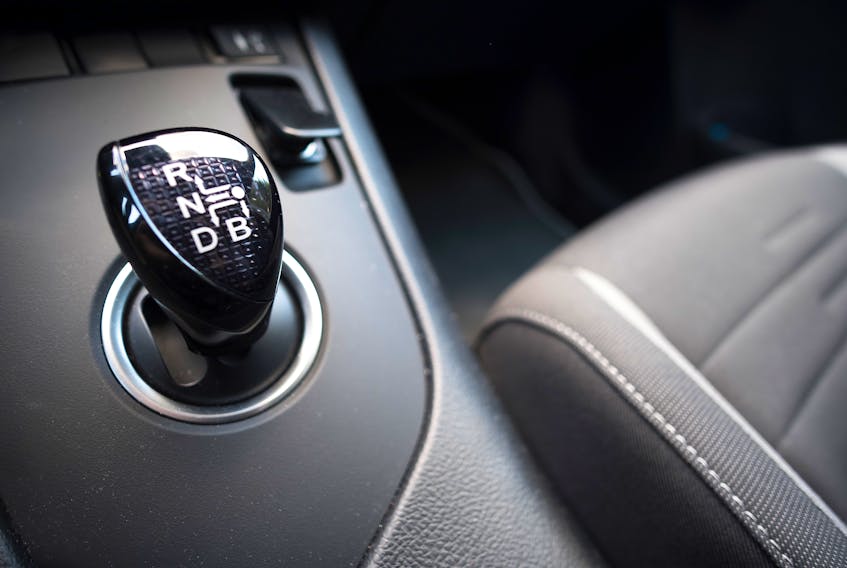By Justin Pritchard
If you’re browsing used vehicle listings for a few-years-old car or crossover, you’ll probably be running into many models that come with a Continuously Variable Transmission, or CVT — and that might raise a few questions for you.
Millions of drivers enjoy CVT-equipped vehicles around the world on the daily. Some owners have reported problems and concerns with this relatively new and increasingly-popular type of transmission, while most have not. Still, used vehicle shoppers can take a few extra steps towards putting their mind at ease.
Below, we’ll cover what a CVT is and — for maximum peace of mind — examine three important questions that need answers before you buy a used vehicle equipped with one of these devices.
What is a CVT?
Inside a CVT, the mechanicals that actually drive your vehicle work a bit differently than the ones in the sort of automatic gearbox you might be used to. However, the CVT is simply a different type of automatic transmission, and both do the same job. With a CVT, there’s no clutch pedal; drivers just put the shifter into gear and go.
The continuously variable transmission helps smooth out the vehicle’s performance while saving fuel. Both these benefits are the result of those unique mechanicals inside of the transmission. In a modern car with a healthy CVT, many drivers won’t notice a difference, at least most of the time. In general, the continuously variable transmission just feels like a really smooth automatic.
This gives test-driving shoppers an advantage when they’re behind the wheel of a used CVT-equipped car they’re considering for purchase.
Question One: Is It Smooth?
Using light to moderate throttle, the car should accelerate smoothly up to speed. If not, or if you feel any hesitation, juddering, or otherwise clumsy behaviour, there might be a problem.
Be sure to accelerate at light, moderate, and heavy throttle. Include some braking and accelerating tests, too. You want to expose the transmission to as many situations as possible, making sure it’s performing smoothly with no trouble signs in all of the tests.
If something seems off, having the vehicle checked by a professional in a dealer setting before you buy — or simply moving on to another unit — is best.
Remember: the inherent characteristic of a healthy CVT is smooth and seamless delivery of engine power to the road. While this type of transmission might feel different in action than what you’re used to, take any roughness or unpleasant behaviour as a serious warning sign.
If you can answer ‘yes’ to this question, you’re off to a good start.
There are two even more important questions you’ll want to answer before you buy. These can help fend off uncertainty, and keep you from buying a used vehicle that’s concealing pricey CVT trouble the seller would rather you foot the bill for.

Question Two: Is Full Servicing History Available?
Can the seller prove the transmission’s servicing requirements have been followed to the letter, as outlined in the owner’s manual? With a ‘yes’ to this question, shoppers know the transmission’s warranty hasn’t been voided by a skipped service interval, and that the transmission has been properly cared for in a timely manner. This is vital to its long-term health.
In online owner communities, stretching and skipping maintenance (or just outright ignoring it), is commonly associated with CVT trouble. Like any part of a vehicle driveline, a long and healthy life for this transmission requires proper care. If you’re the type of driver who doesn’t adhere strictly to maintenance, a CVT may not be for you: it’s not a component with which you’ll want to push your luck when it comes to maintenance.
Without proper service records, the health of the transmission might be questionable, and its remaining warranty coverage might be voided, too.
Just remember: some CVTs require servicing, inspections, software updates, and other care on an occasional basis. Others are ‘sealed’ units that don’t require any regular maintenance at all.

Question Three: Who Has Worked on the Transmission?
Here’s the third and most important question to which you’ll want an answer, according to numerous service advisors and experts in my circle: who has worked on the transmission? And, specifically, has it ever been worked on by someone other than a dealer-trained tech?
This question becomes even more relevant on older and higher-mileage units, but the point is simple: if the CVT has ever been serviced outside of a dealer setting, there’s a higher level of risk.
Some great stories exist about drivers who learned that the hard way: voiding warranty coverage and even destroying their CVT by trying to care for it themselves and save a few bucks, or leaving the work to an inexperienced lube-shop tech unfamiliar with how to properly drain and fill the transmission’s fluid supply, while filling it with the incorrect fluid. “That’s becoming less common,” says Dawn Mueller, a service advisor at a dealership in Northern Ontario. “But a lot of lube shops have bought a lot of transmission jobs over the years.”
At the end of the day, a smooth-running CVT that you can prove has been serviced by its dealership on-time, every time, is your best choice for maximum peace of mind.









